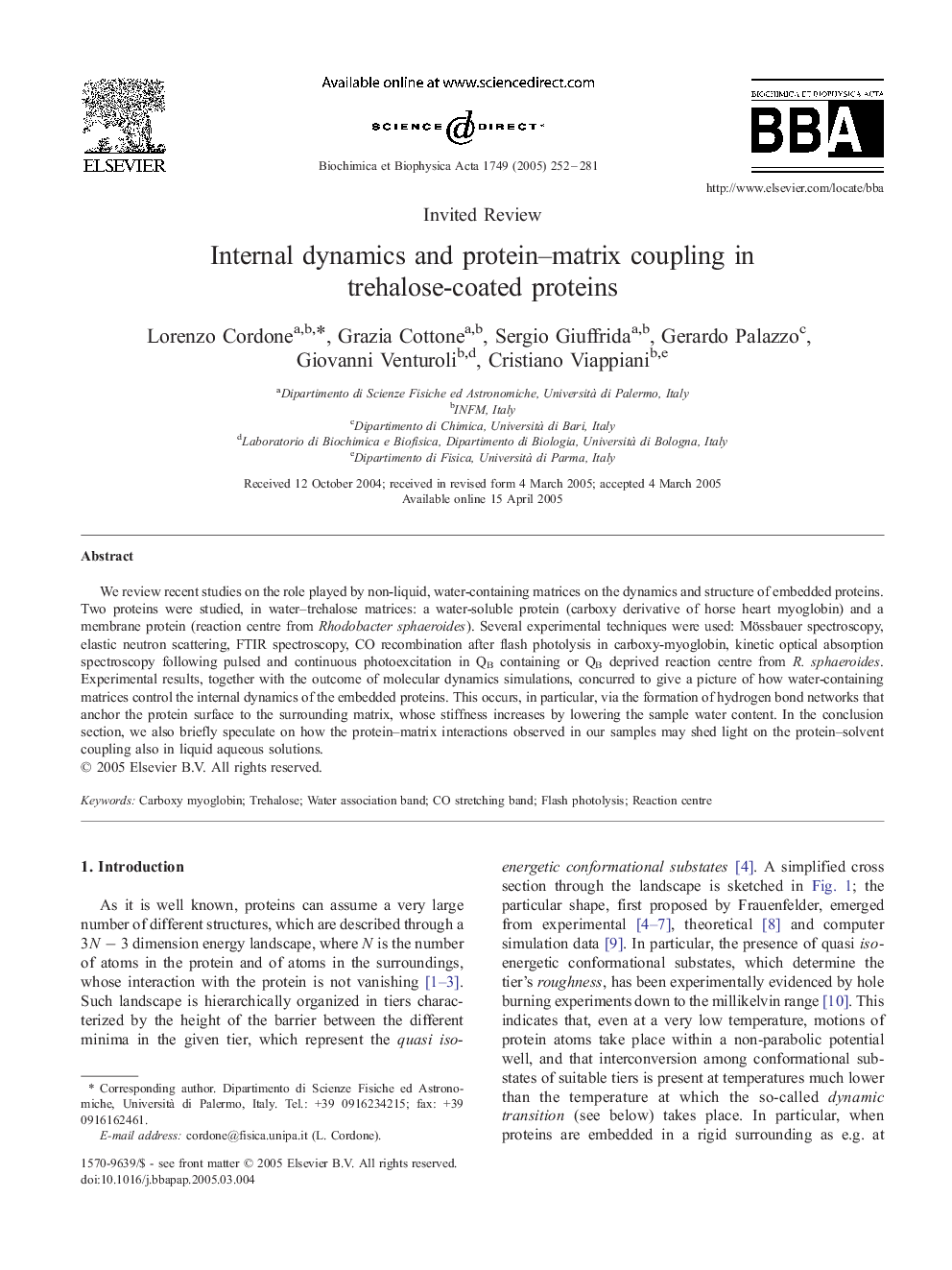| Article ID | Journal | Published Year | Pages | File Type |
|---|---|---|---|---|
| 10537682 | Biochimica et Biophysica Acta (BBA) - Proteins and Proteomics | 2005 | 30 Pages |
Abstract
We review recent studies on the role played by non-liquid, water-containing matrices on the dynamics and structure of embedded proteins. Two proteins were studied, in water-trehalose matrices: a water-soluble protein (carboxy derivative of horse heart myoglobin) and a membrane protein (reaction centre from Rhodobacter sphaeroides). Several experimental techniques were used: Mössbauer spectroscopy, elastic neutron scattering, FTIR spectroscopy, CO recombination after flash photolysis in carboxy-myoglobin, kinetic optical absorption spectroscopy following pulsed and continuous photoexcitation in QB containing or QB deprived reaction centre from R. sphaeroides. Experimental results, together with the outcome of molecular dynamics simulations, concurred to give a picture of how water-containing matrices control the internal dynamics of the embedded proteins. This occurs, in particular, via the formation of hydrogen bond networks that anchor the protein surface to the surrounding matrix, whose stiffness increases by lowering the sample water content. In the conclusion section, we also briefly speculate on how the protein-matrix interactions observed in our samples may shed light on the protein-solvent coupling also in liquid aqueous solutions.
Related Topics
Physical Sciences and Engineering
Chemistry
Analytical Chemistry
Authors
Lorenzo Cordone, Grazia Cottone, Sergio Giuffrida, Gerardo Palazzo, Giovanni Venturoli, Cristiano Viappiani,
